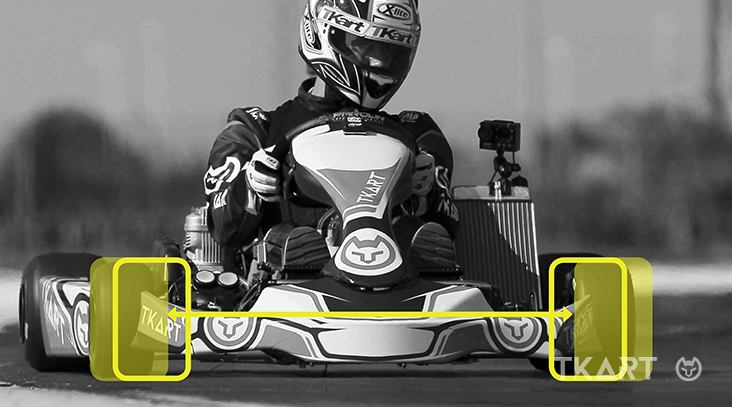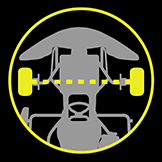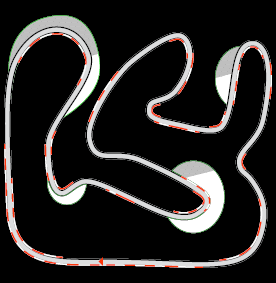TIRES AND GRIP
If you use soft tires on a track without much rubber you won’t get excessive bite (neither in the front nor the rear) and so you’re not going to feel the typical draw-back effect while accelerating. Even so, you need to make sure front and rear grip are well balanced. Setting the front track very wide increases bite at corner entry and mid-corner handling, but could give insufficient traction on corner exit, as the rear inside tire will remain slightly lifted even without much steering. In addition, as a rule of thumb, high front end grip causes greater rear end sliding.
REAR TRACK WIDTH
Our test is concerned with variations in front track width, but rear track also plays an important role. On today’s karts, this is usually set at the maximum regulatory limit of 140 cm. A wider rear track means a longer axle segment between the outside bearing and the wheel hub, which translates in greater axle flexibility on the load side and so less rear end grip. Narrow the rear track and you get the opposite effect.
FRONT TRACK WIDTH
Front track width is one of the factors that determines how much grip the front end has and so how fast the kart enters and covers corners. There are two main principles that regulate to front width. First: a wider front track increases the difference in height between the front tires while steering (in itself determined by the Ackermann angle), with an obvious consequence on grip. The second has to do with the fact that the front inside tire rotates more than the outside front tire, with an ideal rotation point that obviously varies according to front track width: the wider the track, the greater the radius of the ideal curve trajectory to follow. So, to sum up the two: the wider the front track, the more front end grip and the better performance through wide-radius bends. The effect is the opposite with a narrower front track.
 Exclusive Content
Exclusive Content



